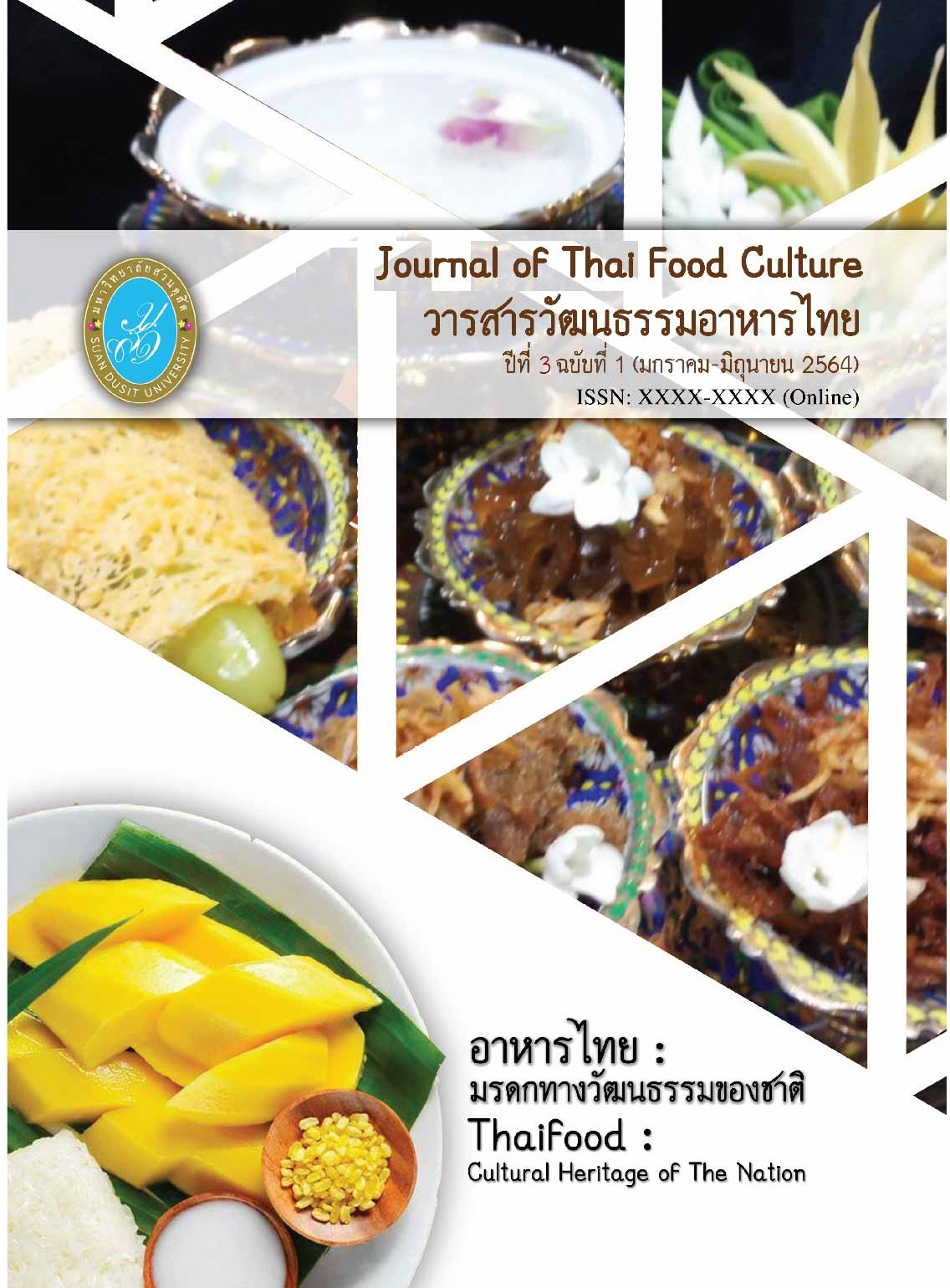Gaeng Hang-lay
Abstract
“Gaeng Hang-lay” is a popular food in North of Thailand. It is affected from Burma in the past. Its cooking method inherit from the past but it is adapted according to context of each area that led to the different style of Gaeng Hang-lay. Factors that affect on cultural propagation include geography, transport, social, economy etc. Gaeng Hang-lay is reddish brown color, little soup, tender pork, strong taste; sour, salty, spicy, and has curry aroma. Currently, Gaeng Hang-lay, which is adapted according to era, have 2 types; Chiang Saen style and Man style. It is often eaten with many traditions or menu in set or Northern style set (Khantoke). For nutrition, ingredients in Gaeng Hang-lay, which consist of shallot, chili, garlic, galangal, and lemon grass, are useful for body, led it good for health.
References
กองบรรณาธิการสำนักพิมพ์แสงแดด. (2548). ผักพื้นบ้านอาหารไทย. กรุงเทพฯ: แสงแดด.
ประหยัด สายวิเชียร. (2547). อาหาร วัฒนธรรมและสุขภาพ. มหาวิทยาลัยเชียงใหม่. เชียงใหม่: นพบุรีการพิมพ์.
ประหยัด สายวิเชียร. อาจารย์ คณะศึกษาศาสตร์ มหาวิทยาลัยเชียงใหม่. (9 พฤศจิกายน 2557). สัมภาษณ์.
วาณี เอี่ยมศรีทอง และประหยัด สายวิเชียร. (2538). อาหารล้านนา. เชียงใหม่: กลางเวียงการพิมพ์.
ฐิติวรฎา ใยสำลี, สุรีย์พร ธัญญะกิจ, จุฑารัตน์ ศักดิ์มั่นวงศ์ และนพพร แพทย์รัตน์. (2562). “แกงฮังเล” วัฒนธรรมและความเชื่อ. Valaya Alongkorn Review (Humanities and Social Science). 9(2). 172-186.
อรอนงค์ ทองมี. (2561). อาหารไทยพื้นบ้าน 1 : อาหารภาคเหนือและอาหารภาคตะวันออกเฉียงเหนือ. กรุงเทพฯ: ศูนย์บริการสื่อและสิ่งพิมพ์กราฟฟิคไซท์ มหาวิทยาลัยสวนดุสิต.
Downloads
Published
How to Cite
Issue
Section
License
Copyright (c) 2022 Suan Dusit School of Culinary Arts

This work is licensed under a Creative Commons Attribution-NonCommercial-NoDerivatives 4.0 International License.
ลิขสิทธิ์ต้นฉบับที่ได้รับการตีพิมพ์ในวารสารวัฒนธรรมอาหารไทย ถือเป็นกรรมสิทธิ์ของโรงเรียนการเรือน มหาวิทยาลัยสวนดุสิต ห้ามผู้ใดนำข้อความทั้งหมดหรือบางส่วนไปพิมพ์ซ้ำ เว้นแต่จะได้รับอนุญาตอย่างเป็นลายลักษณ์อักษรจากโรงเรียนการเรือน มหาวิทยาลัยสวนดุสิต นอกจากนี้ เนื้อหาที่ปรากฎในบทความเป็นความรับผิดชอบของผู้เขียน ทั้งนี้ไม่รวมความผิดพลาดอันเกิดจากเทคนิคการพิมพ์


